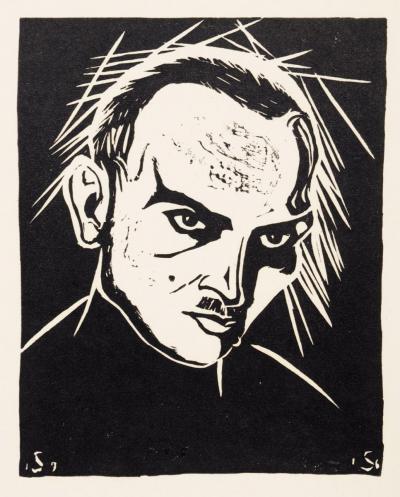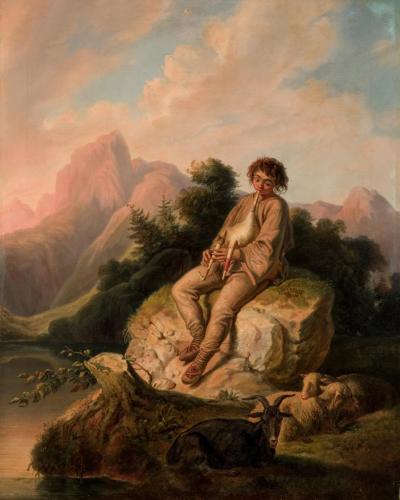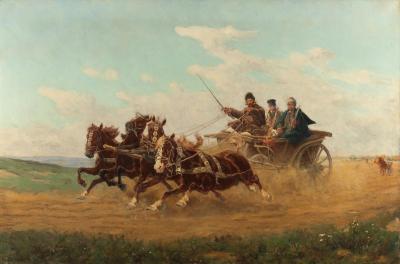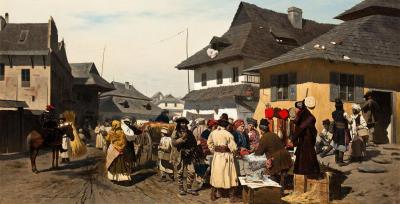Szmaj, Stefan

Stefan Szmaj, Polish doctor, graphic artist and painter. In 1910, he took drawing lessons with Hermann Groeber (1865-1935) in Munich for three months. 1910-14, he attended grammar school in Montabaur. From 1914, he studied medicine in Wrocław, Berlin, Tübingen, Munich and Greifswald. In 1915/16, he lived in Berlin, and in 1916/17, he lived in Munich as part of the Polish artist colony and the group surrounding the author Stanisław Przybyszewski. From 1917 in Poznań, he was part of the group of Polish expressionists linked to the magazine Zdrój and the Bunt group of artists. *10 August 1893 in Xionzenice/Książenice near the Prussian border town of Grabow/Grabów nad Prosną, Greater Poland, †19 September 1970 in Gdynia. Son of the landowner Antoni Szmaj and his wife Antonina, née Skrobańska. He quit secondary school in Ostrowo/Ostrów Wielkopolski in 1910 and went to Munich to study art. When he missed the deadline for enrolling in the Academy of Art, he took private drawing lessons with the portrait, landscape and genre painter Hermann Groeber (1865-1935), but gave them up after three months and returned to Prussia. Expelled from secondary school in Grabow, he attended grammar school in Montabaur (A-levels). Conscripted into the Prussian army at the start of the First World War, he was soon discharged owing to tuberculosis. He then studied medicine in Wrocław, Berlin, Tübingen, Munich and Greifswald. In 1915/16, he was living in Berlin, where he took an interest in the art scene and created his first graphic art. In 1916/17, he lived in Munich again. He played guitar, violin and piano in student orchestras and moved in the circles of the Polish artist colony. He became friends with the author Stanisław Przybyszewski, who introduced him to the group of Polish expressionists in Poznań and Jerzy Hulewicz (1886-1941), the publisher of the Polish literature and art magazine Zdrój/The Source, which was founded in 1917 and in which Przybyszewski was published initially. Smazj’s first linocuts were published in the magazine from February 1918. From 1918, he was part of the newly founded Expressionist group of artists Bunt/Die Revolte in Poznań, with whom he exhibited his pictures in Poznań until 1922, Lwów (now Lviv) and Berlin; he became friends with the artist couple Stanisław Kubicki and Margarete Kubicka. In 1919, he was awarded his degree in medicine at the university in Warsaw. During the Polish-Soviet War of 1919-21, he was deployed as a military doctor. In 1923, he defended his doctoral thesis in opthalmology in Poznań, where he worked as an assistant at the eye hospital. In 1924, he married Maria Irena Hoffman and moved to Gniezno with her where he worked as an opthalmologist, later working in Ostrów Wielkopolski and Bydgoszcz. He maintained his relationships with the artists of the Bunt group, which by now had been disbanded, but distanced himself from Expressionism, and painted portraits and landscapes. In Bydgoszcz, he kept in touch with the local artist scene and in 1932 exhibited in his first solo exhibition. Together with his wife, he organised a salon in his apartment in which artists and intellectuals from Bydgoszcz and Poznań would meet. From 1935, he lived in Gdynia, and in Łowicz during the Second World War. Apart from the brief drawing course with Groeber in Munich, Smazj was self taught. His graphic work comprises around 100 linocuts, wood cuts and lithographs, as well as illustrations and drafts for book covers and bookplates. The artist became known in the years between 1917 and 1922 for linocuts which were influenced by German Expressionism. They were published in the magazine Zdroj and could be seen at the exhibitions held by the Bunt group. Pictures of his graphic works also appeared in the Berlin magazine Die Aktion thanks to its collaboration with the Zdroj, and his works could also been seen in exhibitions in Berlin. The themes of his graphic work included religious motifs ("Saint Sebastian/Św.Sebastian", 1919), cityscapes ("View of a Gothic church/Widok na Kościół gotycki", 1918; "Gniezno", 1925), adaptations from more recent art history, for instance from Gustav Klimt or Edvard Munch ("Kuss/Pocałunek", 1918), and sexual scenes ("Lovers/Para kochanków", 1919), which were considered offensive by some of the audience and removed from exhibitions. As well as six self-portraits (see cover image), Smazj created numerous portraits of friends, artist colleagues and mentors (Artur Swinarski; Stanisław Przybyszewski, both 1920). Several motifs have been ascribed metaphorical meanings, including "Saint Sebastian", who, as the patron saint of soldiers and war invalids, is associated with the Poles’ fight for independence, and the series "Poplars/Topole" (1919/20), which is considered a typical expression of the Polish landscape resulting from Szmaj’s war trauma and is understood as a symbol for the desired connection of nature and humanity. It is possible that his "Prayer to the sun/Modlitwa do słońca" (1919), which can be interpreted as the longing for human renewal and which is also kept as a colourful pastel drawing, has revolutionary origins. Technically, his compositions, with their prismatic refractions, strong black and white contrasts and picture surfaces broken up by working marks, are grounded in the graphic art of German Expressionism. That is also where the artist's passion for Eastern religions and for motifs with African sculptures comes from, on which his geometric-ornamental series "Gods/Bożki" (1918-20) is based. From the middle of the 1920s, he created realistic oil paintings, watercolours and drawings of landscapes, cityscapes and portraits, and in Gdynia he produced maritime scenes and harbour views which only achieved regional recognition. His works can be found in the District Museum/Muzeum Okręgowe w Bydgoszczy im. Leona Wyczółkowskiego in Bydgoszcz, in the City Museum/Muzeum Miejskie in Gdynia and in the National Museums of Kraków, Poznań, Warsaw and Wrocław.



